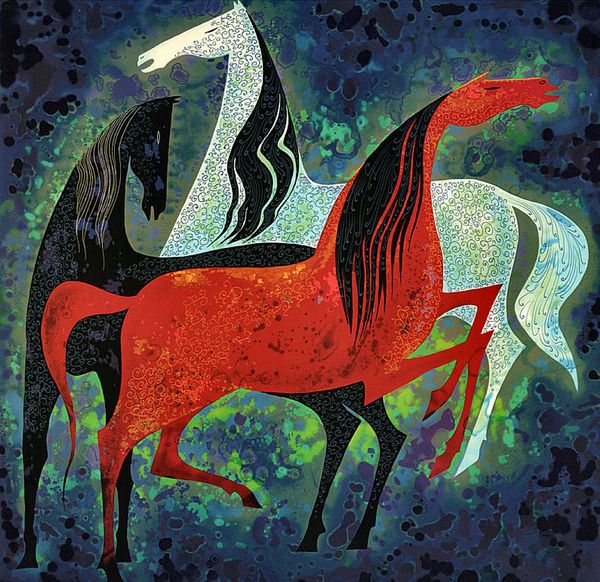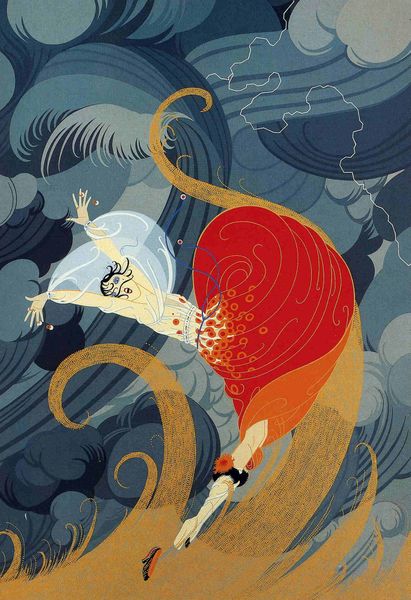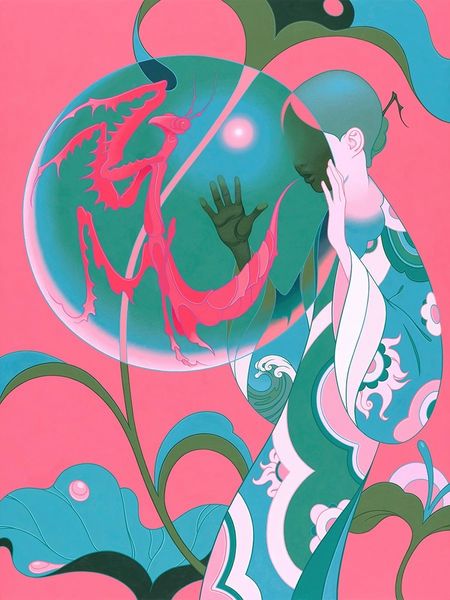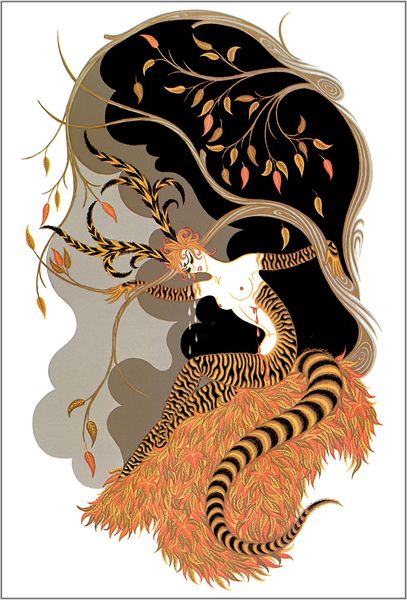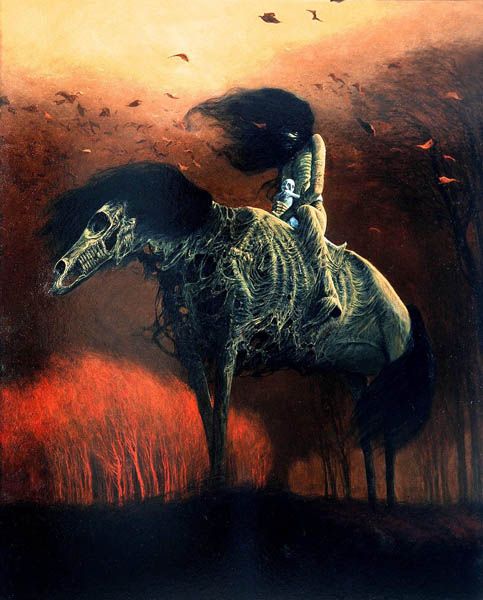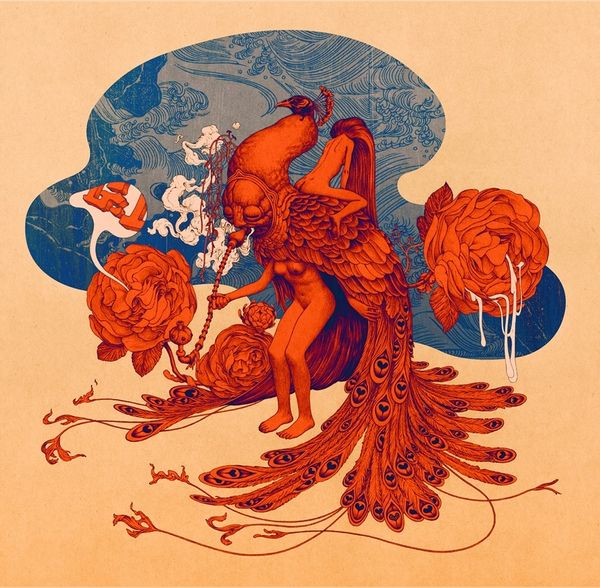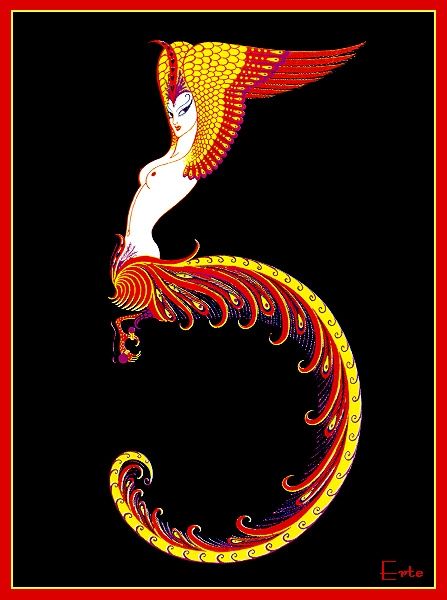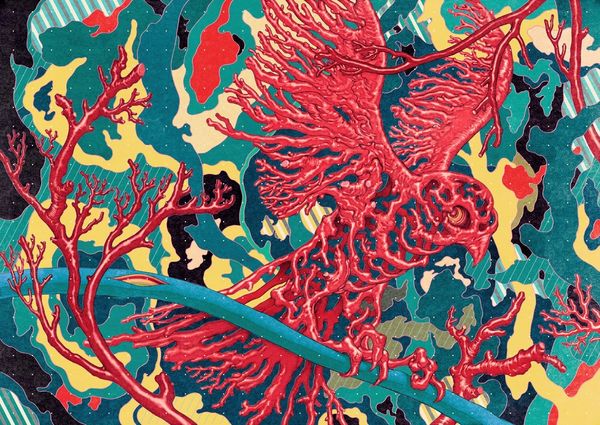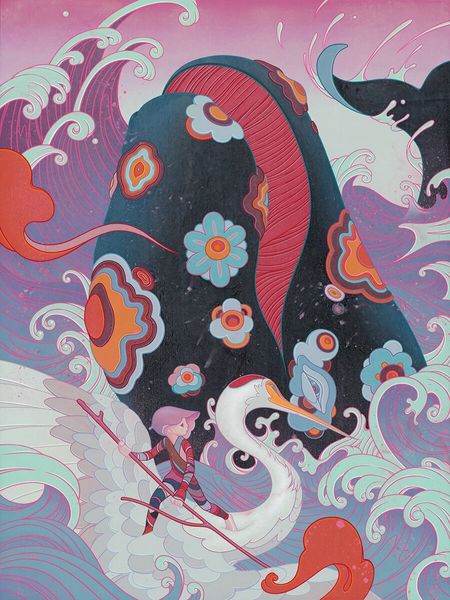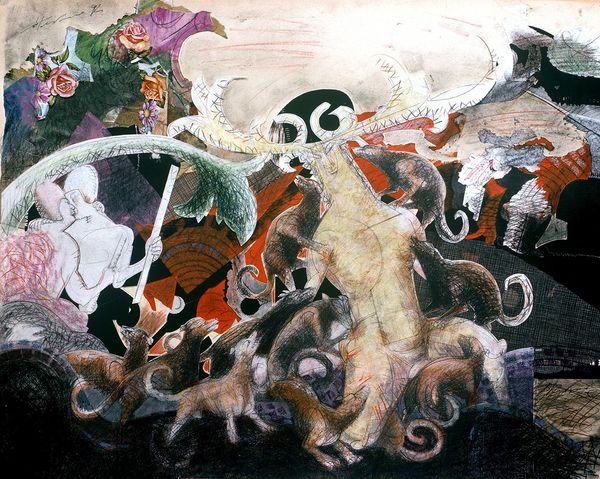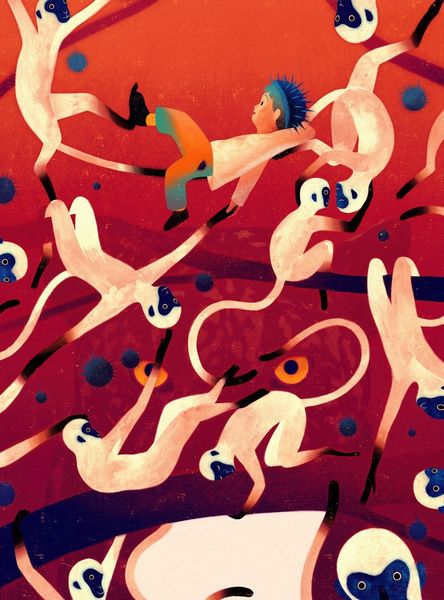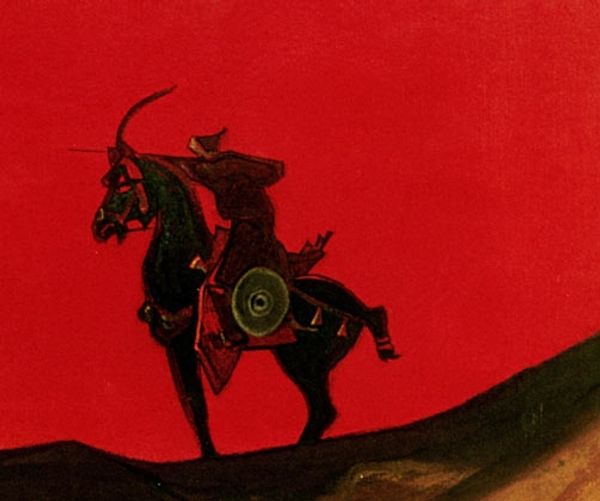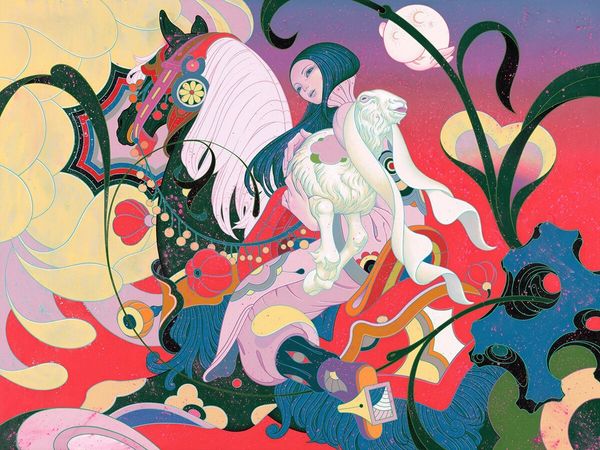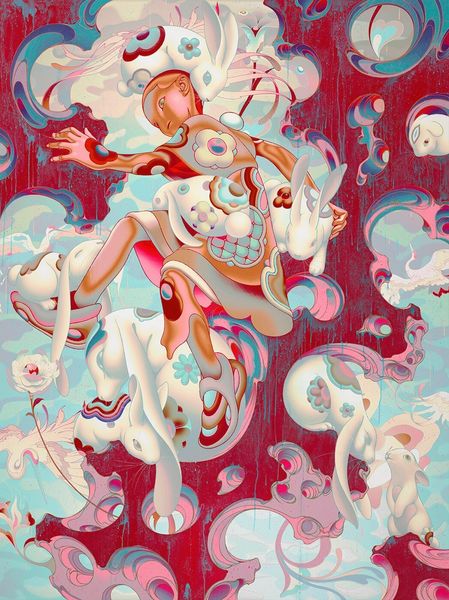
Copyright: Eyvind Earle,Fair Use
Curator: What a striking piece. This is "Two Wild Horses" created by Eyvind Earle in 1998. He worked primarily with acrylic paint, a medium that allowed him to achieve these distinct blocks of vibrant colour. Editor: Immediately, I’m struck by the boldness. The graphic quality is strong. It almost feels like a stylized tapestry, more designed than traditionally painted, particularly given the medium and the date. Curator: Exactly! It is worthwhile to explore his employment with Walt Disney Studios, as a background artist and color stylist, which is critical context for his later independent work. I would consider how this background informs Earle’s exploration of form and commercial appeal. Editor: Definitely, you see that sensibility carried over, which blurs the lines between fine art and mass-produced imagery. I'm curious about Earle’s choice of the horse as the subject. Were there broader cultural narratives influencing him in the late 90s? Curator: Certainly. Think about the cultural fascination with the American West and freedom, reinterpreted here. The choice to set the horses against a complex pattern is a great example of line, a technique Earle often experimented with, a decorative backdrop to highlight his work in nature. Editor: Right, which then brings materiality back to the forefront. The patterns and color fields become commodities in their own right—something reproducible, marketable. This approach distances it from romantic notions of “the wild.” Curator: That is fair to consider. But there are other ways of looking at it; note how Earle plays with shadow and gradients in areas to emphasize his artistry as distinct from strictly mass-produced prints or patterns. He builds upon design aesthetics. Editor: Perhaps a tension exists. It presents something untamed and free but within this contained, almost manufactured aesthetic. I find this duality captivating in many works—where labor and design intersect. Curator: It’s all interconnected. Exploring those tensions—between Earle's labour, Disney’s legacy, and cultural symbols – opens up so much. Editor: Indeed. I leave this encounter wanting to further examine this piece against the commercial and symbolic ecosystem in which it thrived.
Comments
No comments
Be the first to comment and join the conversation on the ultimate creative platform.
